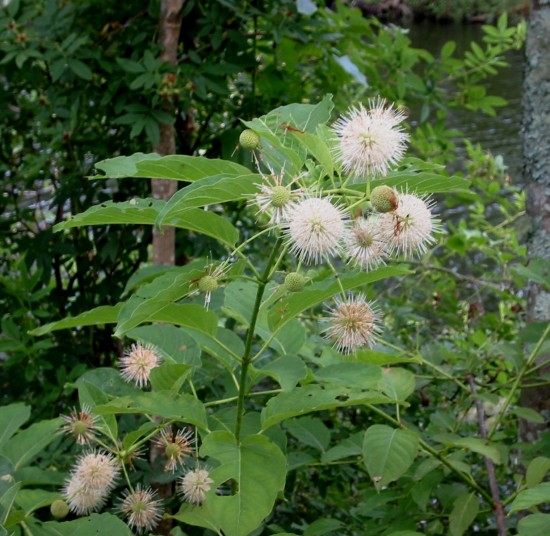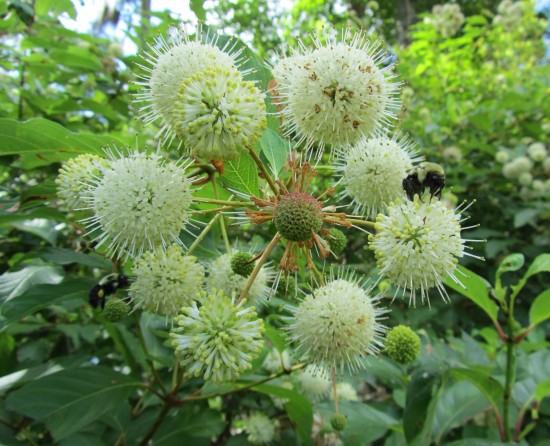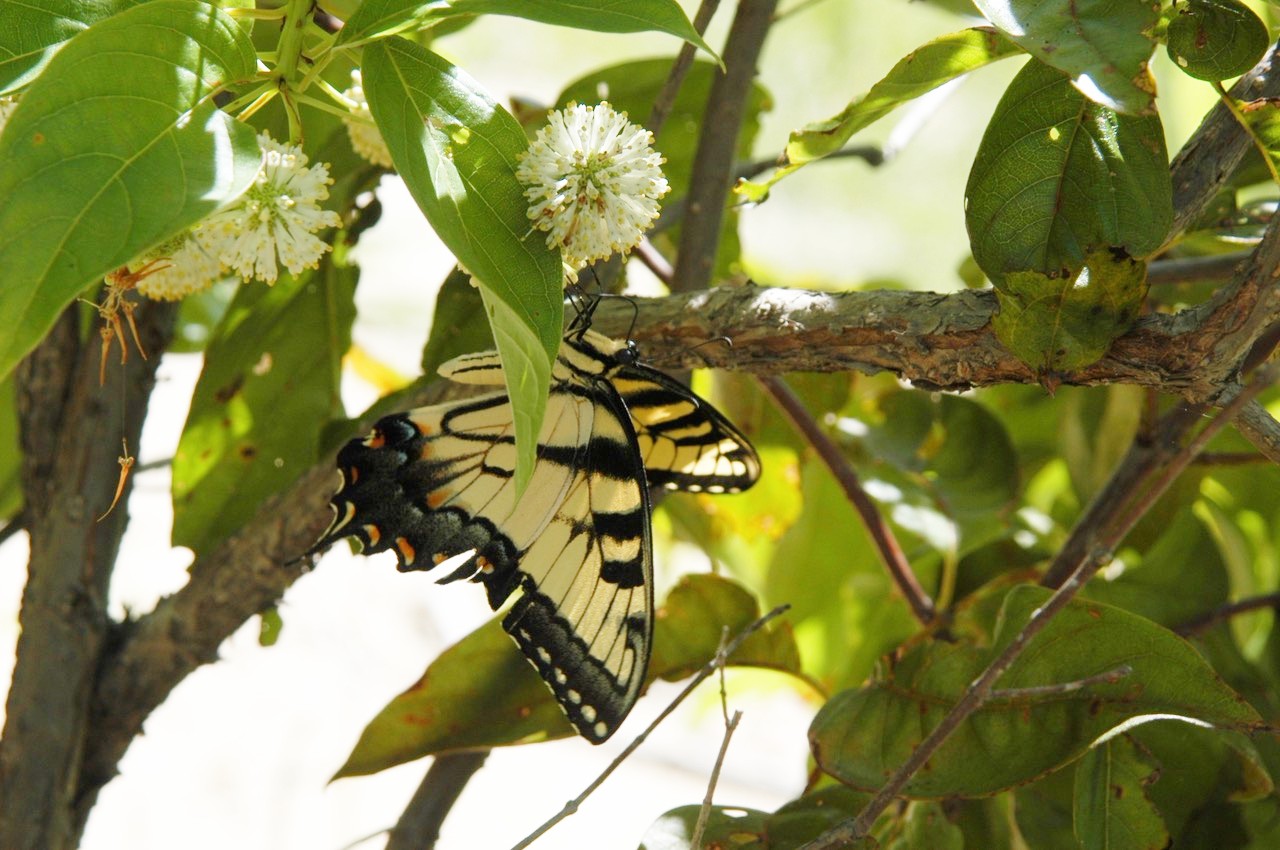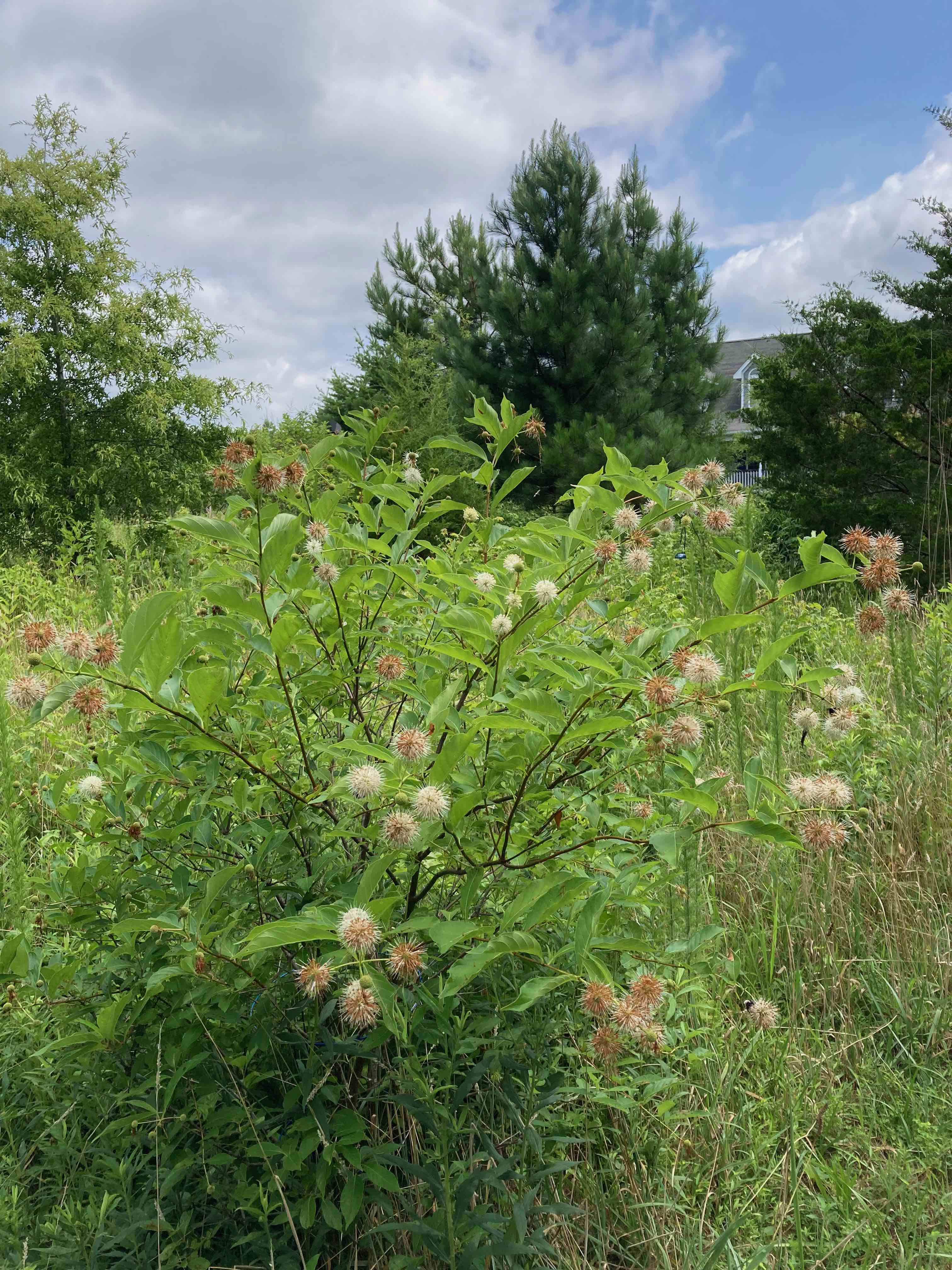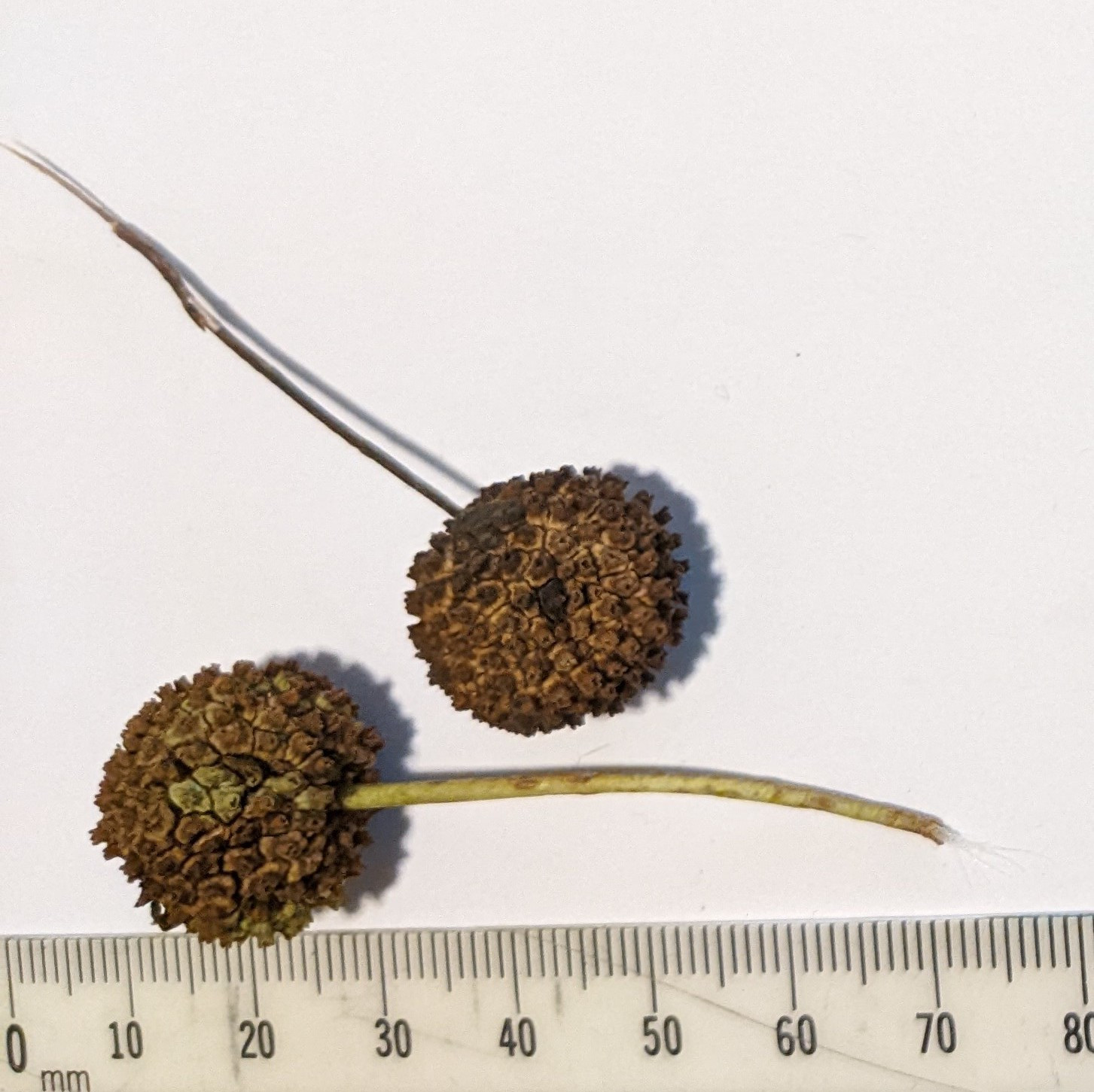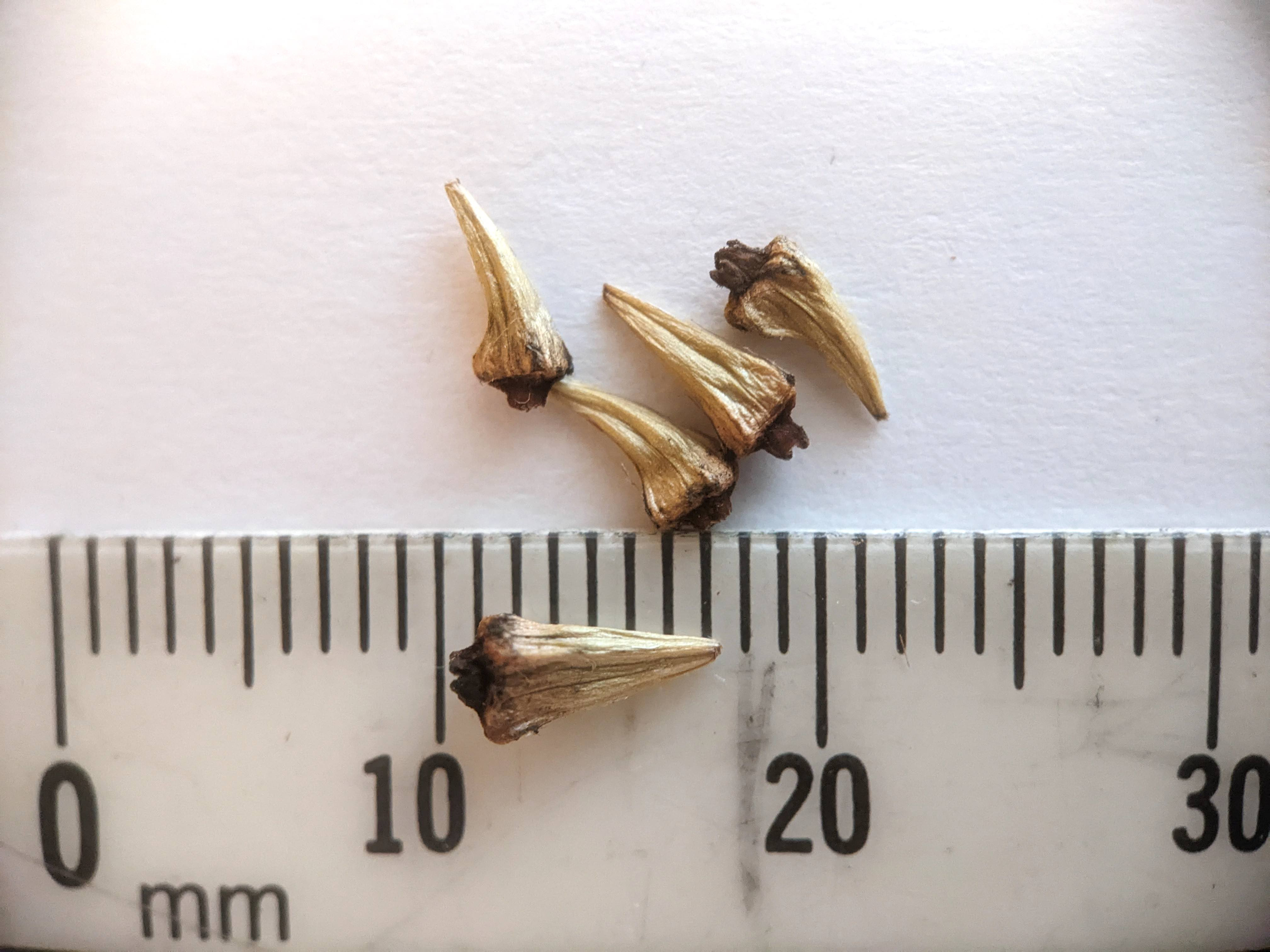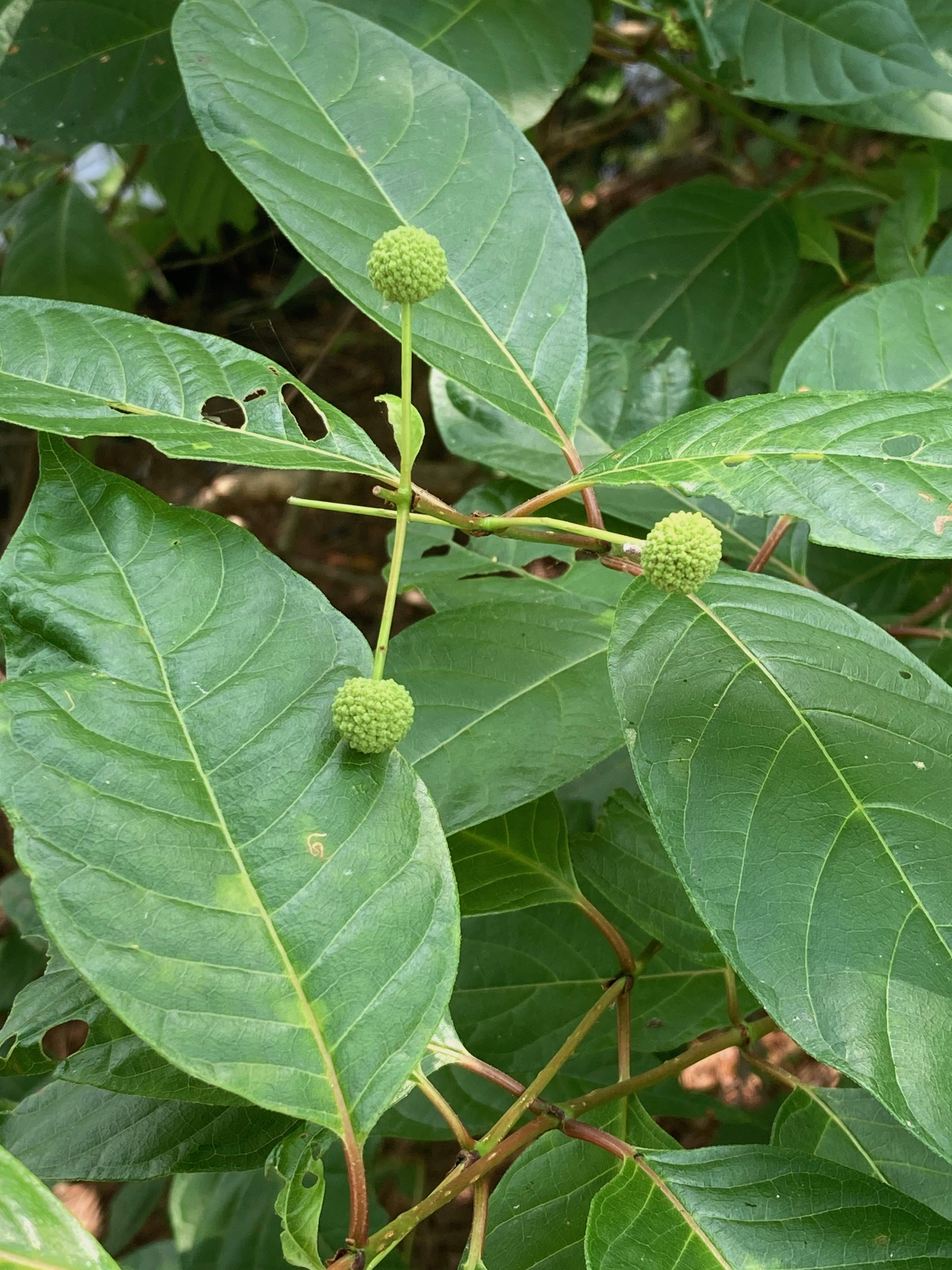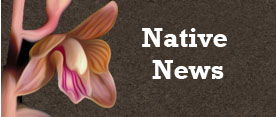NC Native Plant Society:
Plant Details
Cephalanthus occidentalis
Buttonbush
Scientific Name: |
Cephalanthus occidentalis |
|---|---|
Genus: |
Cephalanthus |
Species Epithet: |
occidentalis |
Common Name: |
Buttonbush |
Plant Type |
Tree/Shrub |
Life Cycle |
Perennial |
Plant Family |
Rubiaceae (Madder Family) |
Native/Alien: |
NC Native |
Size: |
6-12 ft. |
Bloom Color(s): |
White |
Light: |
Sun - 6 or more hours of sun per day, Part Shade - 2 to 6 hours of sun per day |
Soil Moisture: |
Moist, Wet |
Bloom Time: |
June, July, August |
Growing Area: |
Mountains, Piedmont, Sandhills, Coastal Plain |
Habitat Description: |
Streambanks, riverbanks, depressional wetlands, lakes, often in standing water |
Leaf Arrangement: |
Opposite, Whorled |
Leaf Retention: |
Deciduous |
Leaf Type: |
Leaves veined, not needle-like or scale-like |
Leaf Form: |
Simple |
Life Cycle: |
Perennial |
Wildlife Value: |
Important for Wildlife |
Landscape Value: |
Recommended and Available |
State Rank: |
S5: Secure (*Key) |
Global Rank: |
G5 - Secure (*Key) |
|
In bloom Buttonbush grows in wet places, even in standing water. Wood Ducks eat the seed and the flowers attract hummingbirds and butterflies. Leaves opposite or in whorls of three. Jack Spruill, Tyrell Co, July 21, 2009 This plant was growing on the banks of the Scuppernong River in Columbia. |
|
|
Flower cluster David Paynter, Brunswick Town, 6.11.11 |
|
|
Close-up of flower David Paynter, Brunswick Town, 6.11.11 |
|
|
Close-up of flower buds in early July Garden in Orange County, NC
Bettina Darveaux |
|
|
Mature bark
Wake County, NC, August 2002, by Hugh Partridge |
|
|
Very attractive small to medium sized shrub when in bloom. The flowers look like little pom poms. This picture was taken a bit past peak flowering and many of the inflorescences have flowers that have turned brown and fallen off. Orange County, NC, cultivated
Bettina Darveaux |
|
|
Flower heads mature into hard spherical ball-like fruits consisting of multiple tiny two-seeded nutlets. Randolph Co., NC- cultivated
Judy West |
|
|
Nutlets Randolph Co., NC- cultivated
Judy West |
|
|
Large, glossy deciduous leaves have entire margins and are opposite. Pitt Co., NC
Bettina Darveaux |
|
Links: |
|
back to top
go to plant details search
go to plant images search
go to gallery home
back to Initial c Gallery
back to orchids
back to Carnivorous Plants
back to Trilliums

